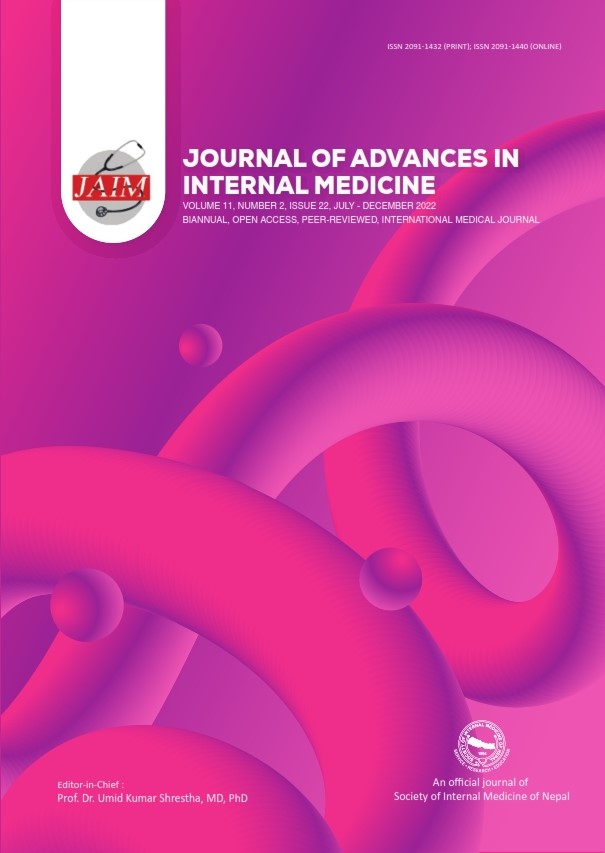Premature or due End of COVID-19
DOI:
https://doi.org/10.3126/jaim.v11i2.52438Keywords:
SARS-CoV-2, Pandemic, De-escalation, COVID-19 end, vaccination, immunizationAbstract
The SARS-CoV-2 virus has been a part of our daily lives since its inception towards the latter part of 2019. The global journey throughout the pandemic has been one of numerous steps in progression and steps in regression and can be described as a roller-coaster like ride. The majority of the global populous is currently in phase 4 of the SARS-CoV-2 pandemic. Phase 4 involves preparing and investing in further research and development of infrastructures to prevent such pandemics and outbreaks in future. The continued global COVID-19 vaccination campaigns and the booster doses offered therein are the greatest weapon being wielded to control and now ultimately end the global pandemic. According to the WHO the total weekly COVID cases have been decreasing on a constant scale with the latest (19 of September 2022) reported weekly update depicting a deficit of 281745 cases (an 8.3% reduction from the previous weekly statistics). In contrast to the positive direction of movement of COVID cases on a generalized basis, The United Kingdom’s cases seem to be regressing. Although the global COVID picture is showing very positive signs, the global populous must not be lulled into a false sense of security as the globe experienced first-hand what the discovery of a new variant can do to both the infection rates as well as global financial and fiscal markets, as with the Omicron variant in December of 2021. The COVID-19 pandemic is in its final stages; however, a continued and orchestrated global effort is pertinent to ensuring that the pandemic is truly ended and that no unexpected flare ups occur. A continued global vaccination effort will be key to not only ending this pandemic, but to also preventing such future occurrences. The single greatest threat to truly ending this current pandemic is the premature declaration that it is over.
Downloads
Downloads
Published
How to Cite
Issue
Section
License

This work is licensed under a Creative Commons Attribution 4.0 International License.
This license enables reusers to distribute, remix, adapt, and build upon the material in any medium or format, so long as attribution is given to the creator.




